Abstract
Candida lipolytica ATCC 8661 was grown in a mineral-salts hydrocarbon medium. n-Alkanes and 1-alkenes with 14 through 18 carbon atoms were used as substrates. Ether extracts of culture fluids and cells obtained from cultures grown on the various substrates were analyzed by thin-layer and gas-liquid chromatography. Analyses of fluids from cultures grown on n-alkanes indicated a predominance of fatty acids and alcohols of the same chain length as the substrate. In addition, numerous other fatty acids and alcohols were present. Analyses of saponifiable and nonsaponifiable material obtained from the cells revealed essentially the same products. The presence of primary and secondary alcohols, as well as fatty acids, of the same chain length as the n-alkane substrate suggested that attack on both the methyl and α-methylene group was occurring. The significance of these two mechanisms in the degradation of n-alkanes by this organism was not evident from the data presented. Analyses of fluids from cultures grown on 1-alkenes indicated the presence of 1,2-diols, as well as ω-unsaturated fatty acids, of the same chain length as the substrate. Alcohols present were all unsaturated. Saponifiable and nonsaponifiable material obtained from cells contained essentially the same products. The presence of 1,2-diols and ω-unsaturated fatty acids of the same chain length as the substrate from cultures grown on 1-alkenes indicated that both the terminal methyl group and the terminal double bond were being attacked.
Full text
PDF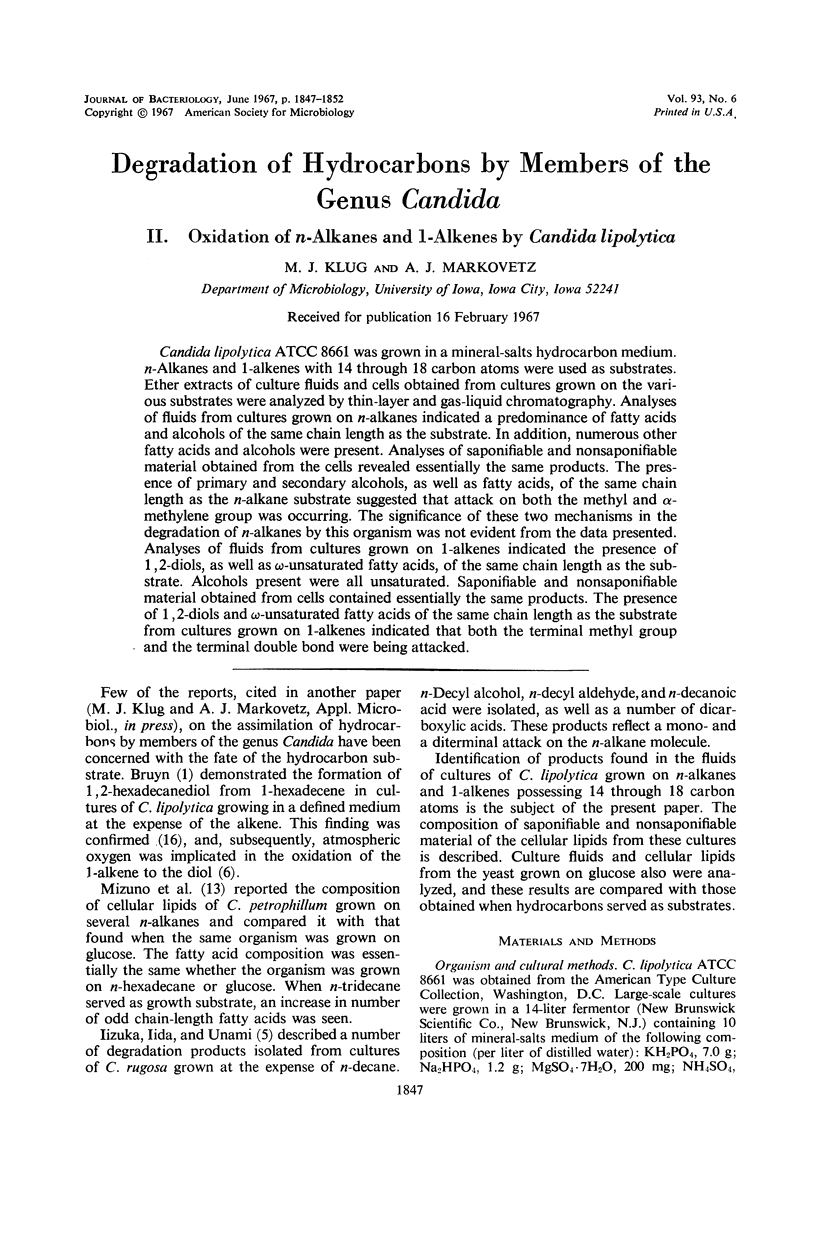
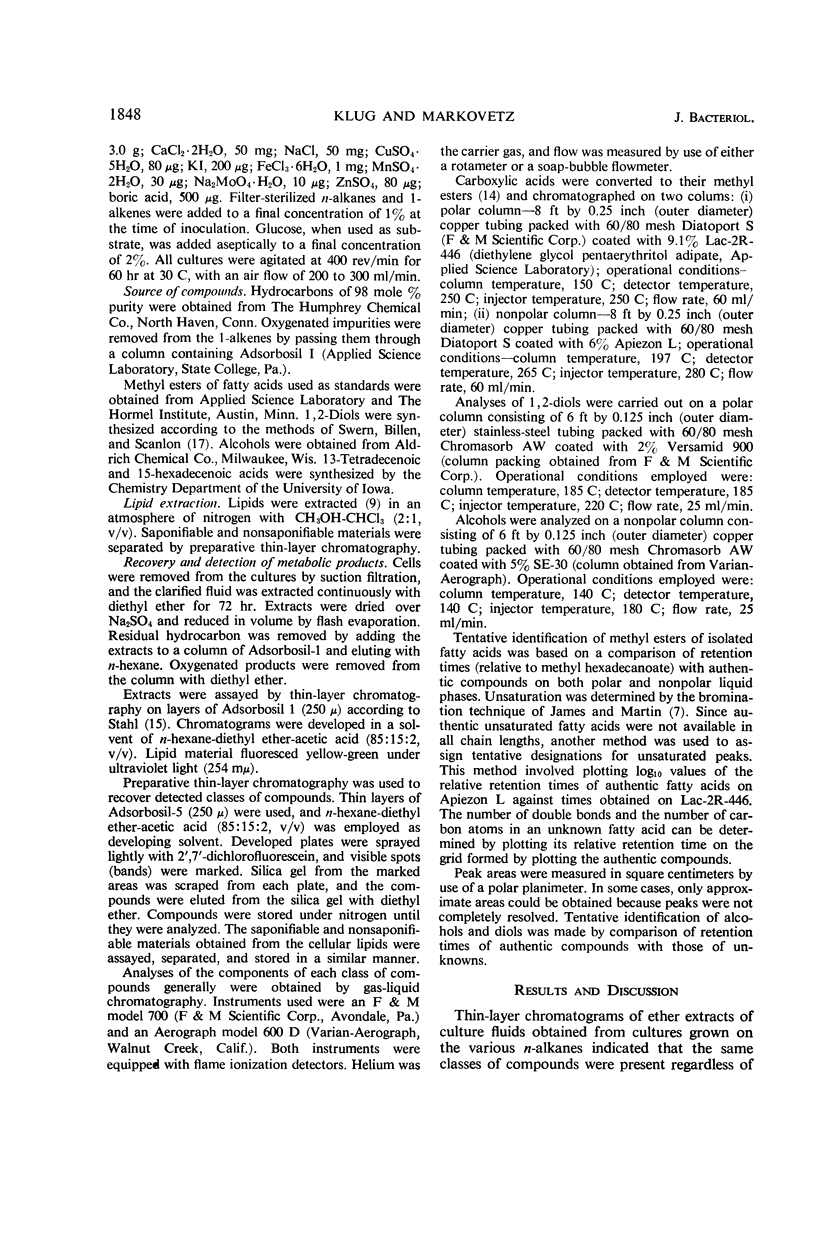
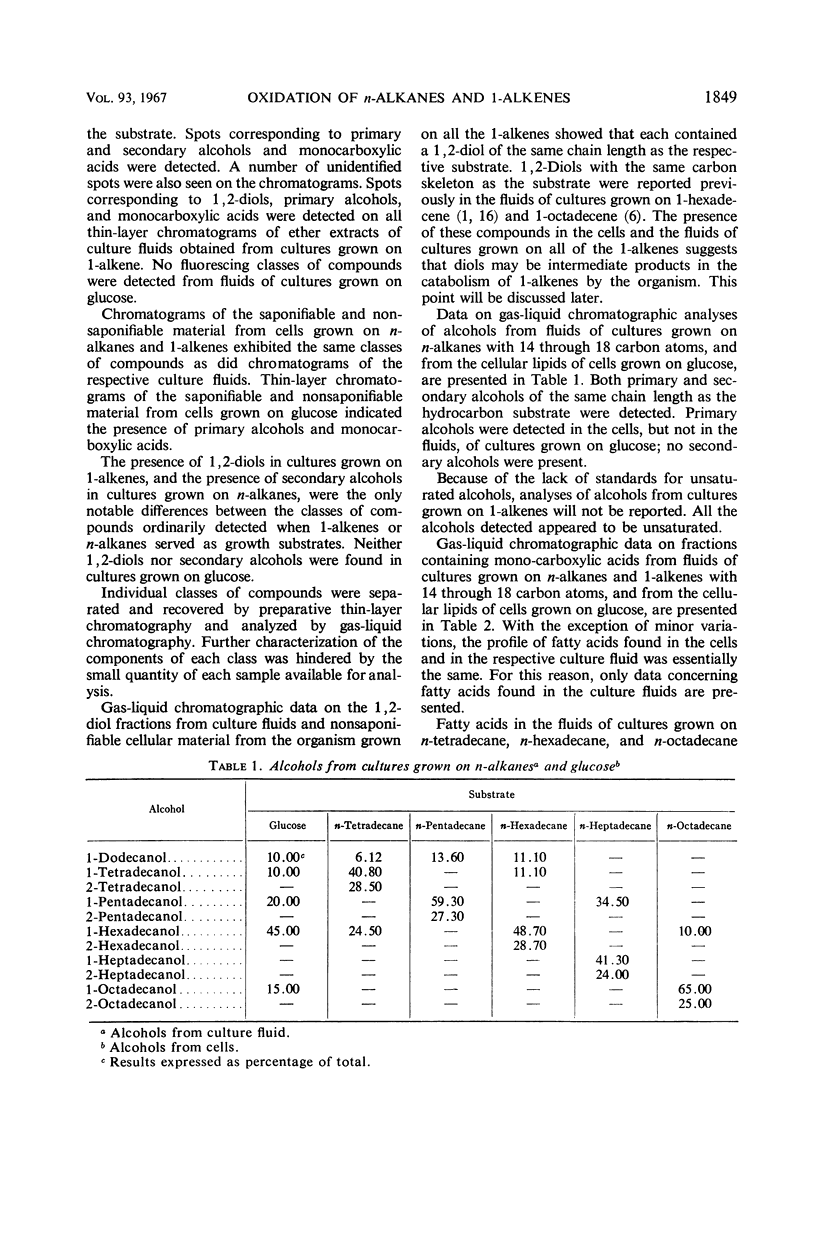
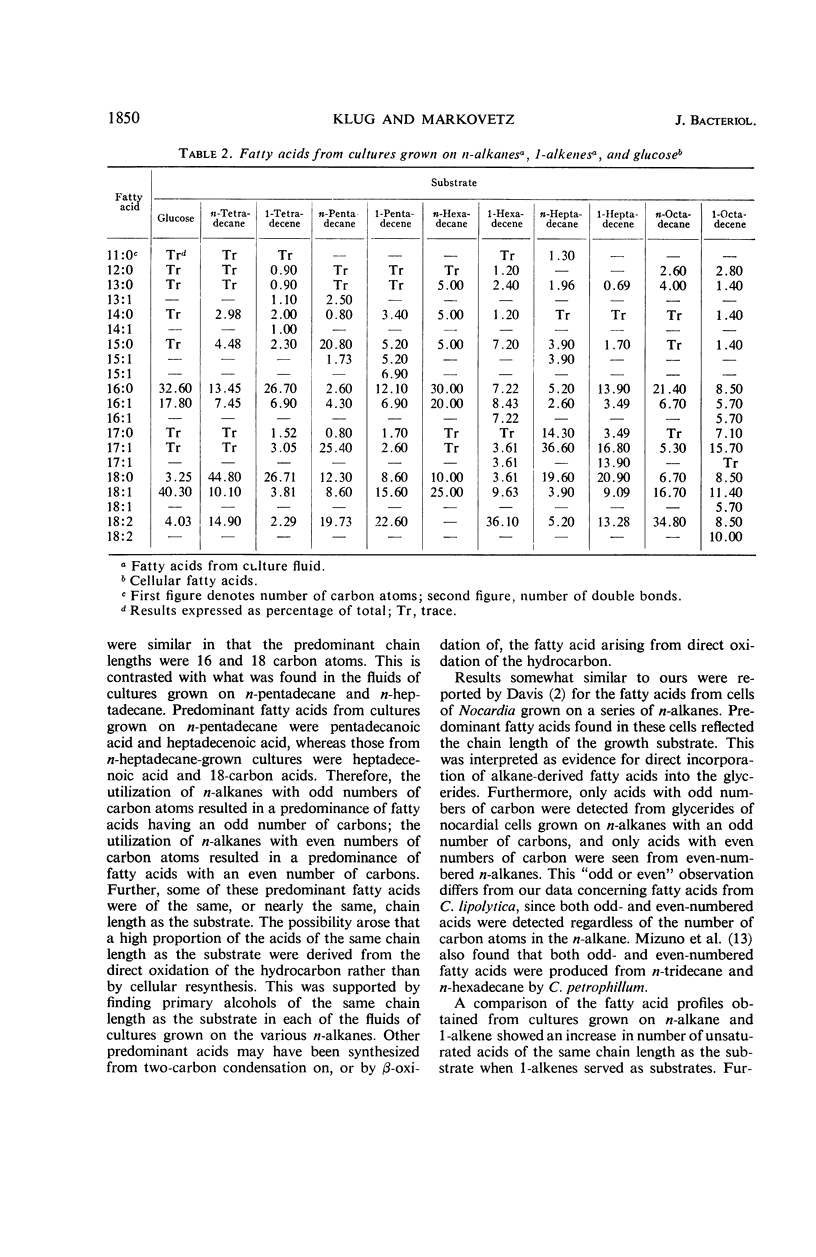

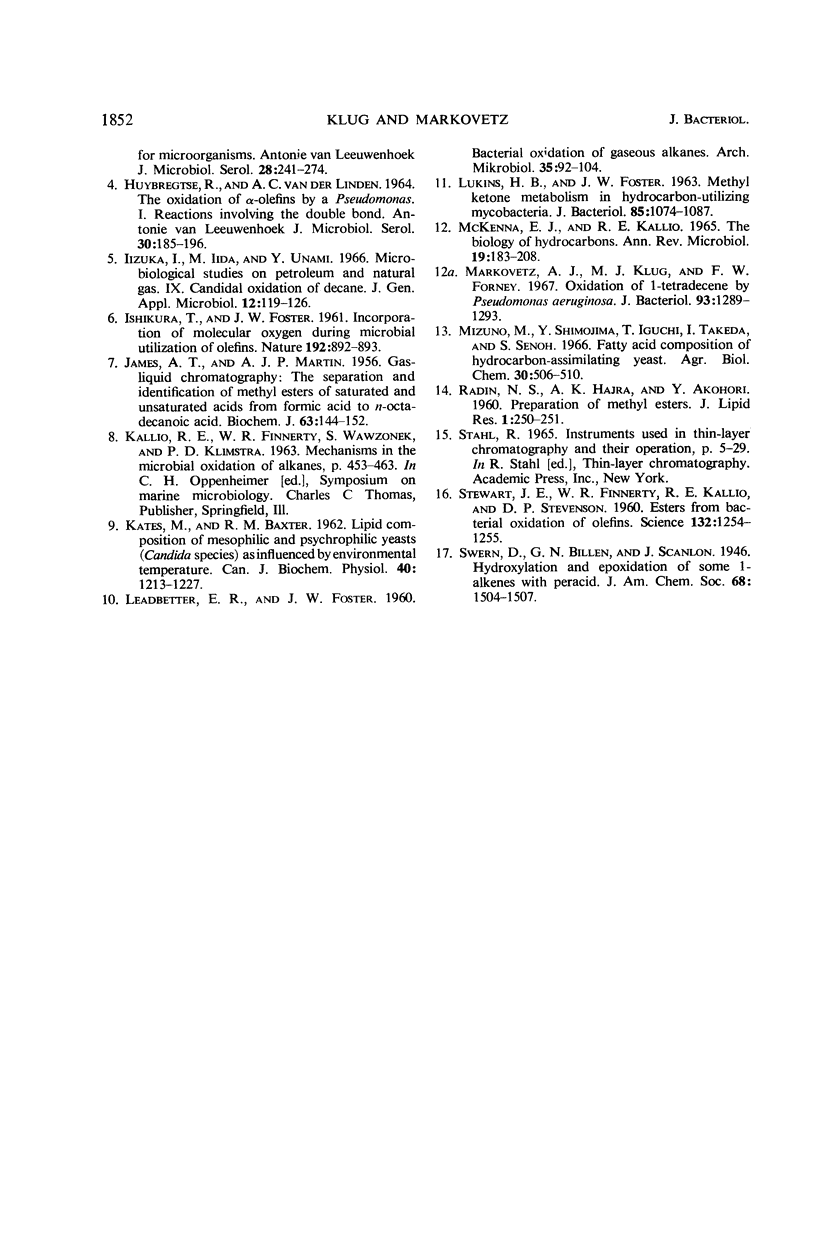
Selected References
These references are in PubMed. This may not be the complete list of references from this article.
- HUYBREGTSE R., VANDERLINDEN A. C. THE OXIDATION OF ALPHA-OLEFINS BY A PSEUDOMONAS. REACTIONS INVOLVING THE DOUBLE BOND. Antonie Van Leeuwenhoek. 1964;30:185–196. doi: 10.1007/BF02046725. [DOI] [PubMed] [Google Scholar]
- KATES M., BAXTER R. M. Lipid composition of mesophilic and psychrophilic yeasts (Candida species) as influenced by environmental temperature. Can J Biochem Physiol. 1962 Sep;40:1213–1227. [PubMed] [Google Scholar]
- LEADBETTER E. R., FOSTER J. W. Bacterial oxidation of gaseous alkanes. Arch Mikrobiol. 1960;35:92–104. doi: 10.1007/BF00425597. [DOI] [PubMed] [Google Scholar]
- LUKINS H. B., FOSTER J. W. METHYL KETONE METABOLISM IN HYDROCARBON-UTILIZING MYCOBACTERIA. J Bacteriol. 1963 May;85:1074–1087. doi: 10.1128/jb.85.5.1074-1087.1963. [DOI] [PMC free article] [PubMed] [Google Scholar]
- Markovetz A. J., Klug M. J., Forney F. W. Oxidation of 1-tetradecene by Pseudomonas aeruginosa. J Bacteriol. 1967 Apr;93(4):1289–1293. doi: 10.1128/jb.93.4.1289-1293.1967. [DOI] [PMC free article] [PubMed] [Google Scholar]
- McKenna E. J., Kallio R. E. The biology of hydrocarbons. Annu Rev Microbiol. 1965;19:183–208. doi: 10.1146/annurev.mi.19.100165.001151. [DOI] [PubMed] [Google Scholar]
- RADIN N. S., HAJRA A. K., AKAHORI Y. Preparation of methyl esters. J Lipid Res. 1960 Apr;1:250–251. [PubMed] [Google Scholar]
- Stewart J. E., Finnerty W. R., Kallio R. E., Stevenson D. P. Esters from Bacterial Oxidation of Olefins. Science. 1960 Oct 28;132(3435):1254–1254. doi: 10.1126/science.132.3435.1254. [DOI] [PubMed] [Google Scholar]


